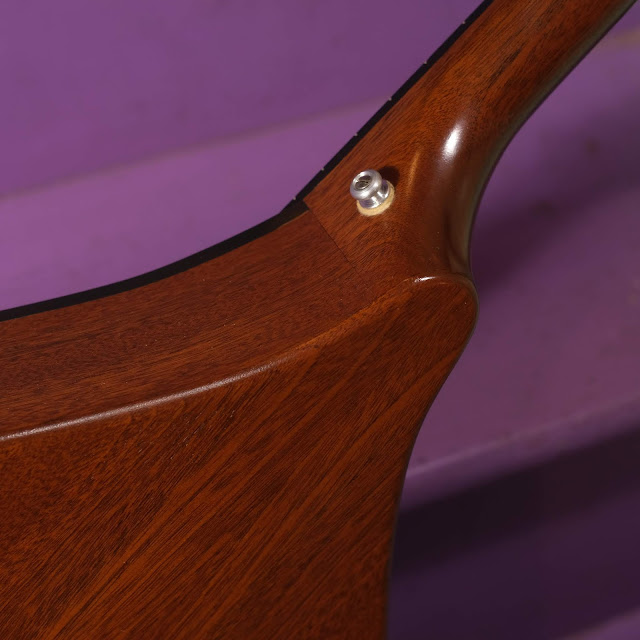1999 Freshwater Octave Mandolin
A local customer brought this older Scottish-made Freshwater octave mandolin in for consignment. He'd bought it new and the label states it was made in 1999. It's pretty typical for a '90s octave mando of the Celtic persuasion, but the body is definitely a little wider than I'm used to. It took me a few minutes to really get adjusted to how to hold it correctly. It's also surprisingly heavy -- either because of a steel-bar neck reinforcement or because the back and side woods are relatively thick compared to the top -- or both! It reminds me of picking up an '80s Guild flattop and being surprised by their weight. However, that makes them sturdy, too.
Tonewise, this sounds like a '90s octave -- sort-of in the Flatiron vein but wider and warmer-sounding. It has great sustain and sounds a lot better out front than from behind it. There's a long dryness crack near the center seam on the top, however, that was repaired and cleated in the past. Whoever did the job didn't fill the crack with wood but instead filled it with glue, so it's obvious as a black line on the top. It didn't photo very well with all of the strings in the way, but you can see it if you click to blow-up the images. My work was setup-side stuff, but now that it's done, this plays like a champ.
Work included: a fret level/dress, minor cleaning, restring with 42w/42w, 30w/30w, 18w/18w, 12/12 gauges (GDAE low to high), and setup. Action is hair-over 1/16" on the bass and 1/16" on the treble -- just perfect. It looks like the saddle was shimmed-up in the past so it does have a drop-in slot for minor action adjustments.
Scale length: 21 3/8"
Nut width: 1 3/8"
String spacing at nut: 1 1/4"
String spacing at bridge: 1 9/16"
Body length: 16 5/8"
Lower bout width: 15"
Side depth at deepest: 3"
Top wood: solid spruce
Back/sides wood: solid mahogany
Neck wood: mahogany
Fretboard: ebony
Bridge: ebony, bone saddle
Neck feel: medium C/D shape, flat board
Condition notes: there's bright natural finish near the bridge from where the bridge sat (in the wrong position) for years and years. There's also a long, repaired, hairline crack running under the strings and to the tailpiece on the top. The fretboard also has a couple tight hairline cracks that are stable and no issue. Someone also over-tightened several of the tuner hex-nut-ferrules in the past and pulled their housings out from the base of the tuner. It's not an issue for tuning or function of the tuner and makes no difference except when the strings are off if the instrument -- at which point they rattle a little. I only mention it for completeness' sake.
It comes with: a gigbag.
It comes with: a gigbag.
















Comments
Peter Verity, Edinburgh